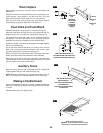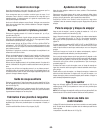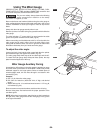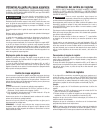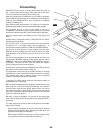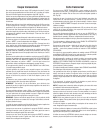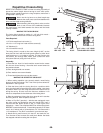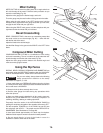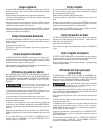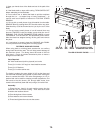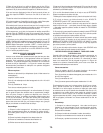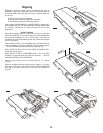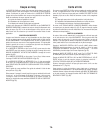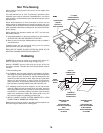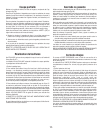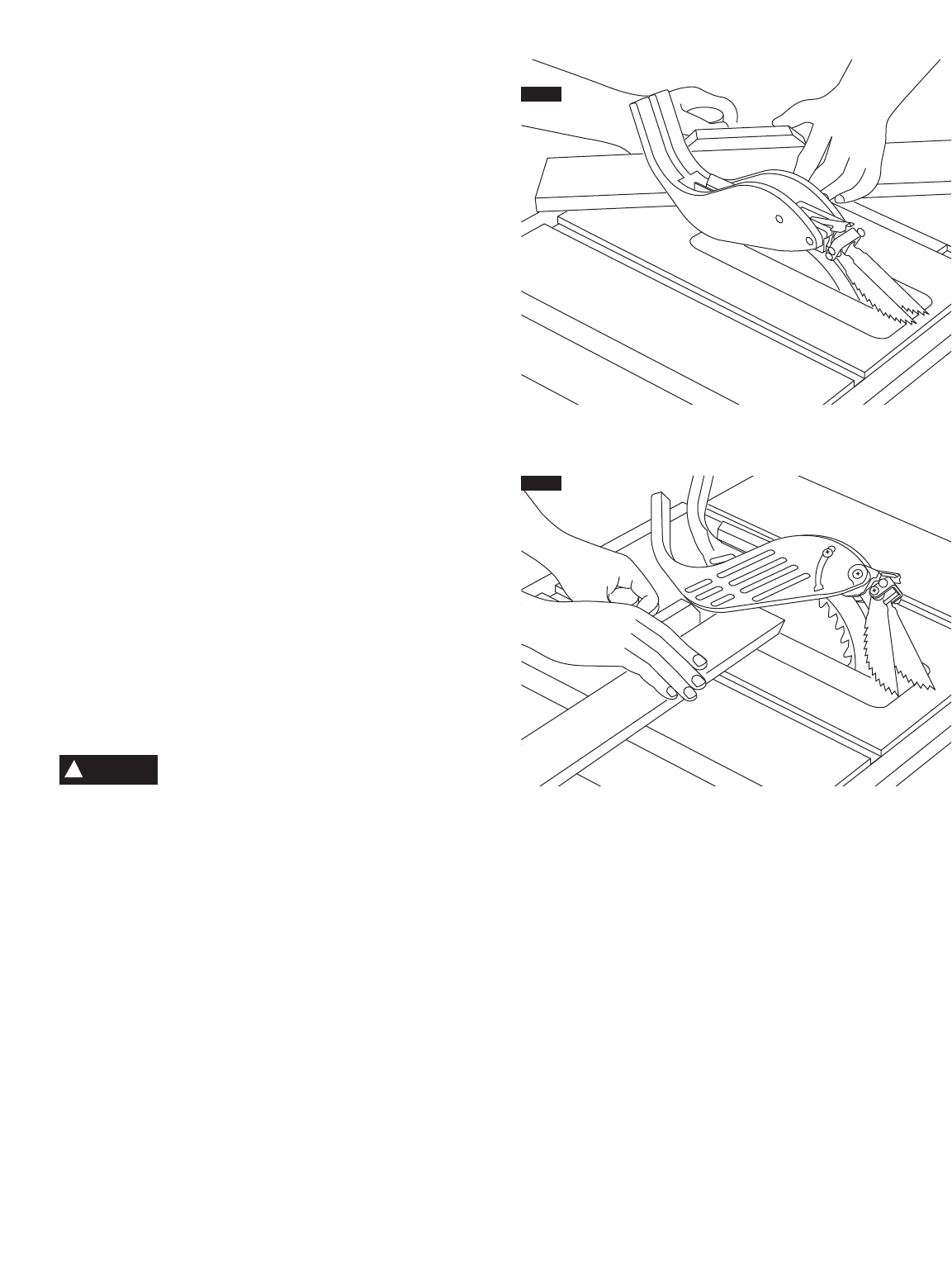
FIG. 59
FIG. 60
70
.
Miter Cutting
M
ITER CUTTING is known as cutting wood at an angle other than
90° with the edge of the wood. Follow the same procedure as you
would for crosscutting (Fig. 59).
Adjust the miter gauge to the desired angle, and lock it.
The miter gauge may be used in either of the grooves in the table.
W
hen using the miter gauge in the LEFT hand groove, hold the
workpiece firmly against the miter gauge head with your left hand,
and grip the lock knob with your right hand.
When using the RIGHT hand groove, hold the workpiece with your
r
ight hand and the lock knob with your left hand.
Bevel Crosscutting
BEVEL CROSSCUTTING is the same as crosscutting except that
the wood is also cut at a bevel angle (Fig. 60) … other than 90°
with the flat side of the wood.
Adjust the blade to the desired angle.
Use the Miter Gauge in the groove to the RIGHT or the LEFT of the
blade.
Compound Miter Cutting
COMPOUND MITER CUTTING is a combination of miter cutting
and bevel crosscutting. The cut is made at an angle other than 90°
to both the edge and the flat side of the wood (Fig. 60).
Adjust the miter gauge and the blade to the desired angle and
make sure miter gauge is locked.
Using the Rip Fence
RIPPING, BEVEL RIPPING, RESAWING AND RABBETING are
performed using the RIP FENCE together with the AUXILIARY
FENCE / WORK SUPPORT, PUSH STICK OR PUSH BLOCK.
For your own safety, always observe the following
safety precautions in addition to the safety
instructions on Pages 2, 3, 4 & 5.
1. Never make these cuts FREEHAND (without using the rip fence
or auxiliary devices when required) because the blade could bind in
the cut and cause a KICKBACK.
2. Always lock the rip fence securely when in use.
3. Remove miter gauge from table during any operations which
utilize the rip fence.
4. Make sure blade guard is installed for all thru-sawing type cuts.
Replace the guard IMMEDIATELY following completion of
resawing, rabbeting, dadoing or molding operations.
Frequently check the action of the ANTIKICKBACK PAWLS by
passing the workpiece alongside of the spreader while saw is OFF.
Pull the workpiece TOWARD you. If the PAWLS do not DIG into
the workpiece and HOLD it … the pawls must be REPLACED or
SHARPENED. (See “Maintenance” on Page 84).
5. Have blade extend approximately 1/8" above top of workpiece.
Additional blade exposure would increase the hazard potential.
6. Do not stand directly in front of the blade in case of a
KICKBACK. Stand to either side of the blade.
WARNING
!



